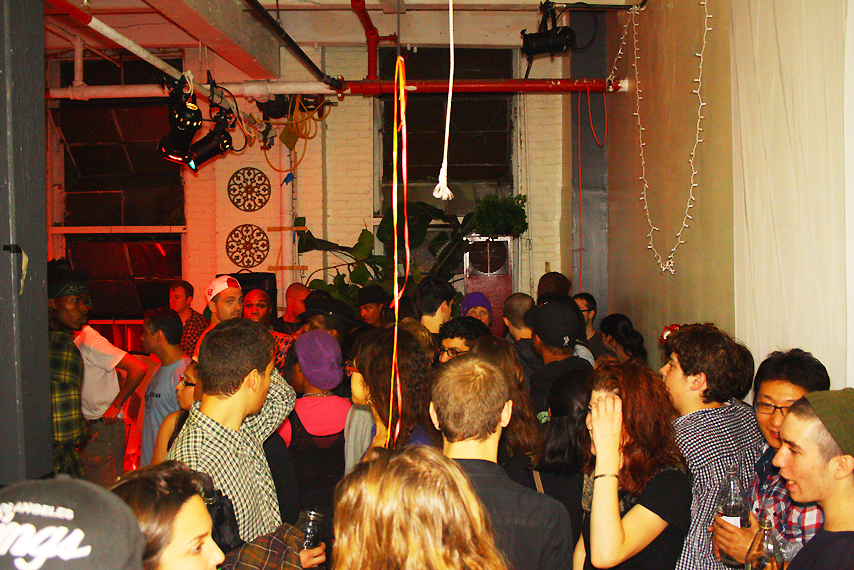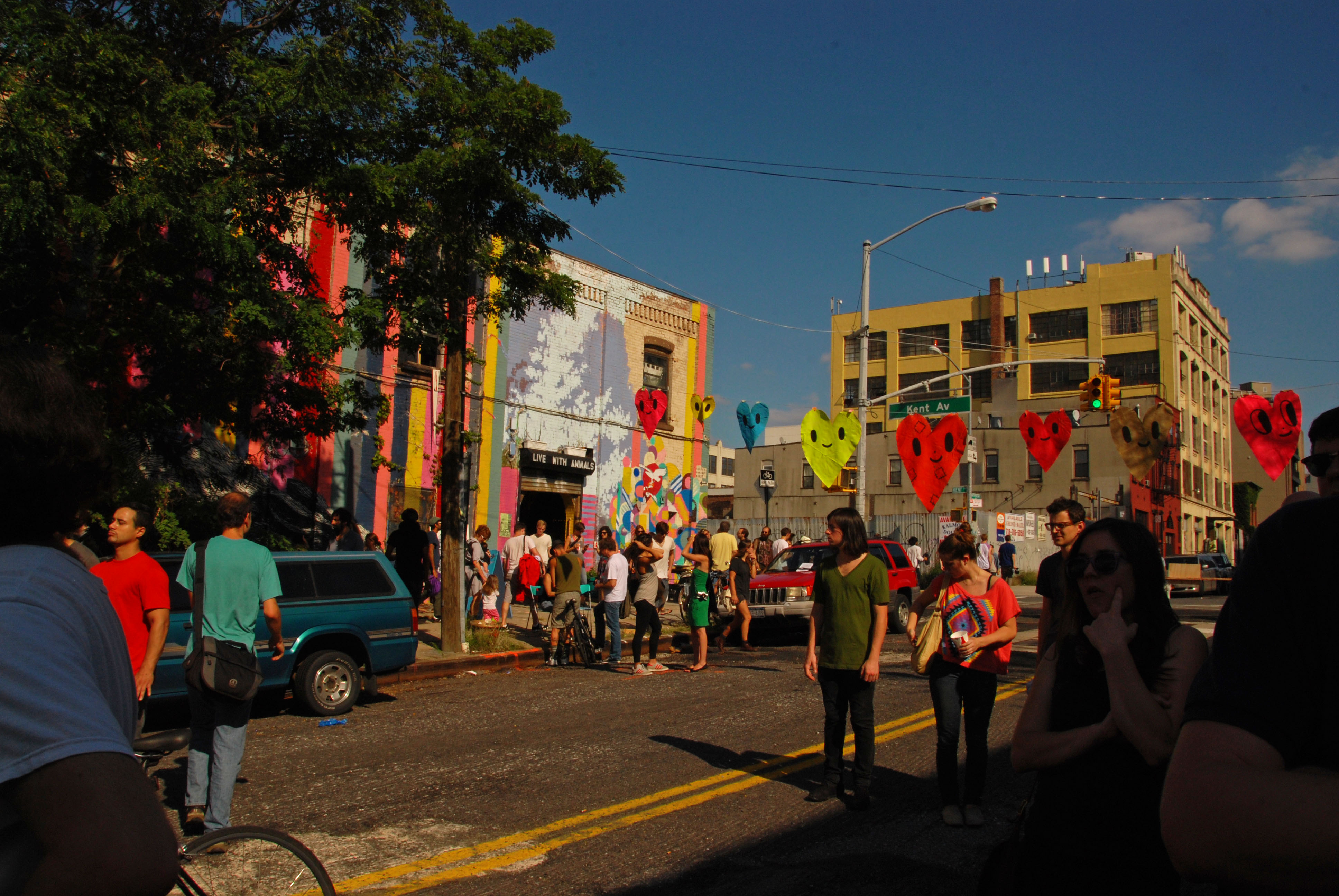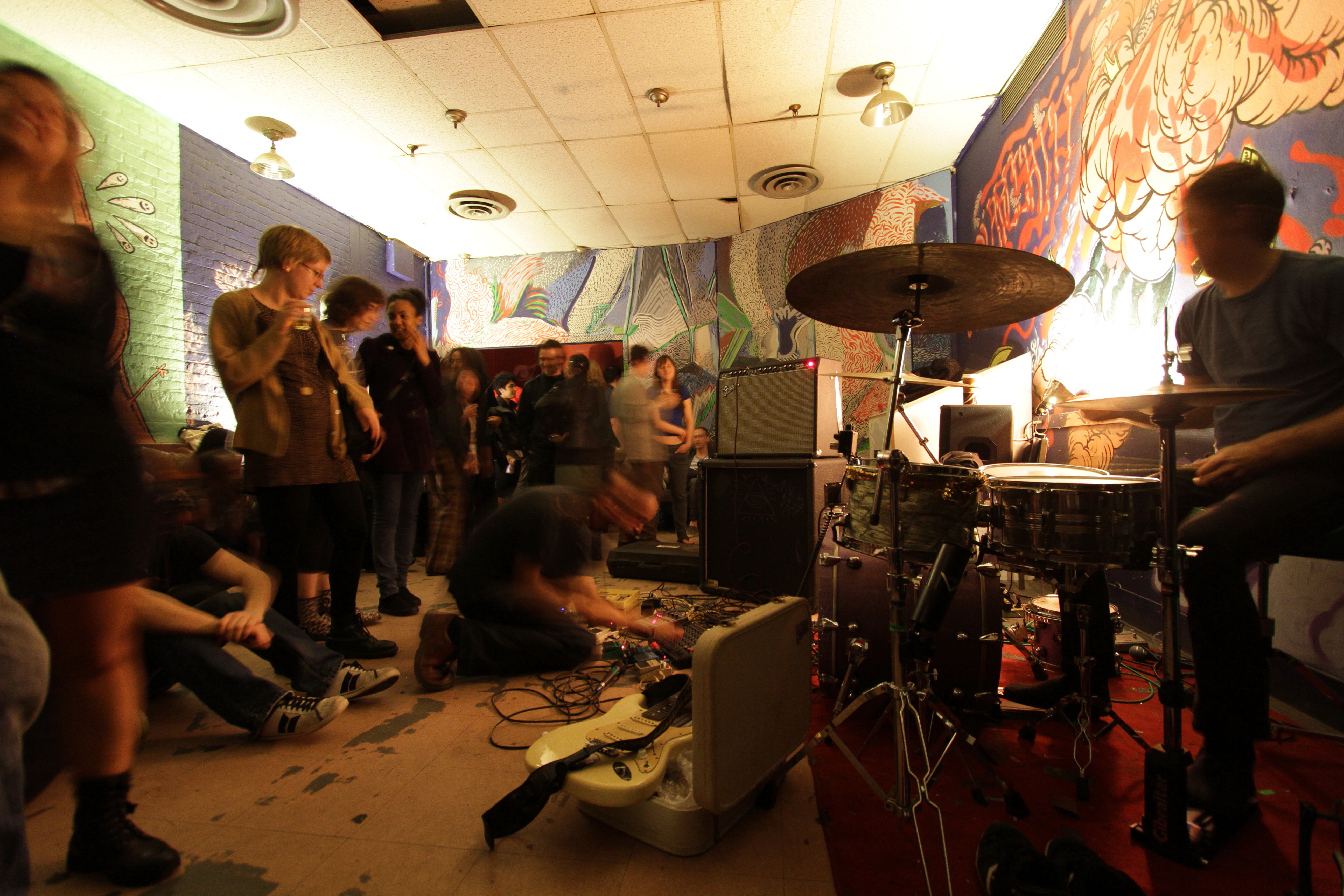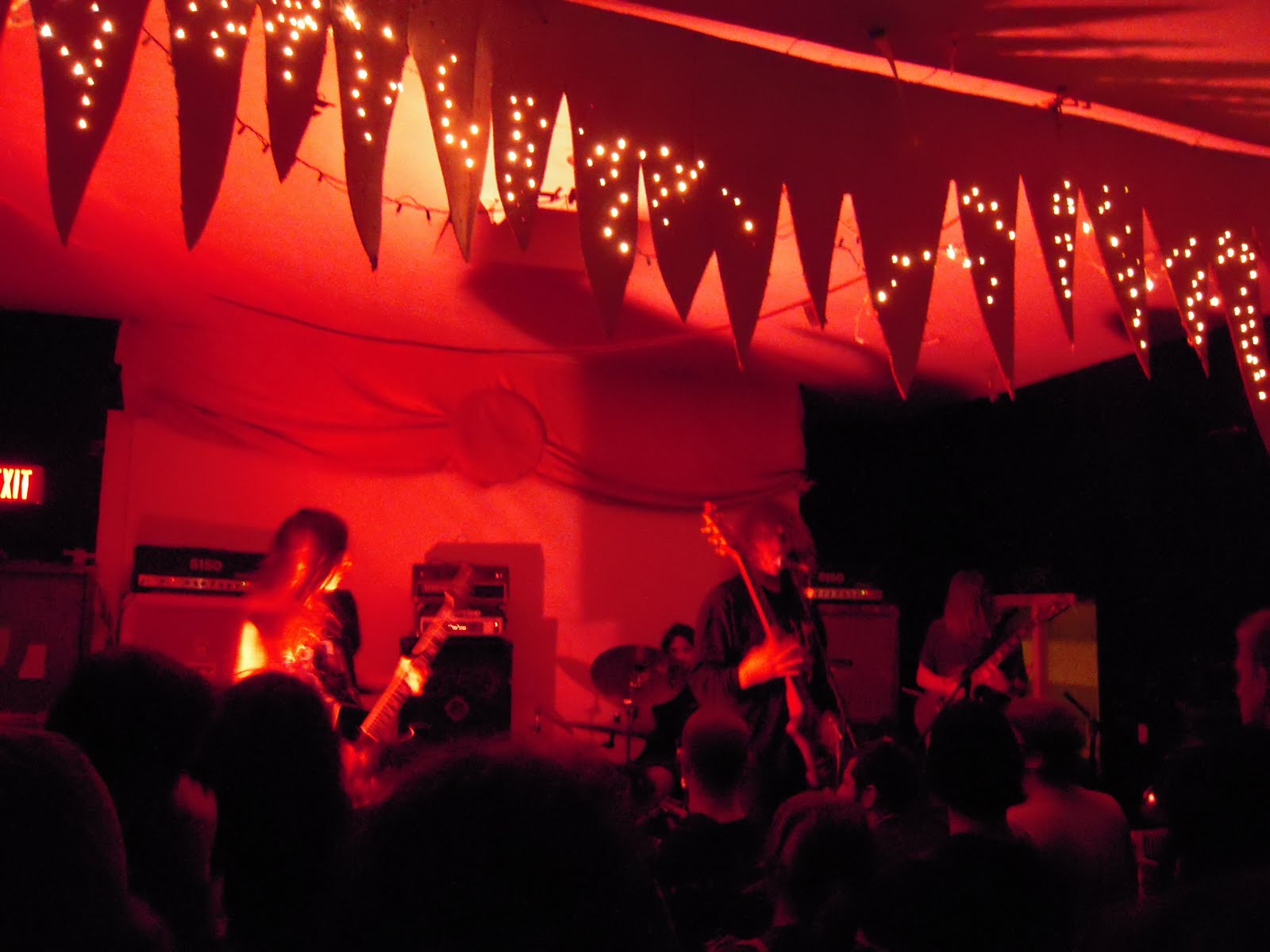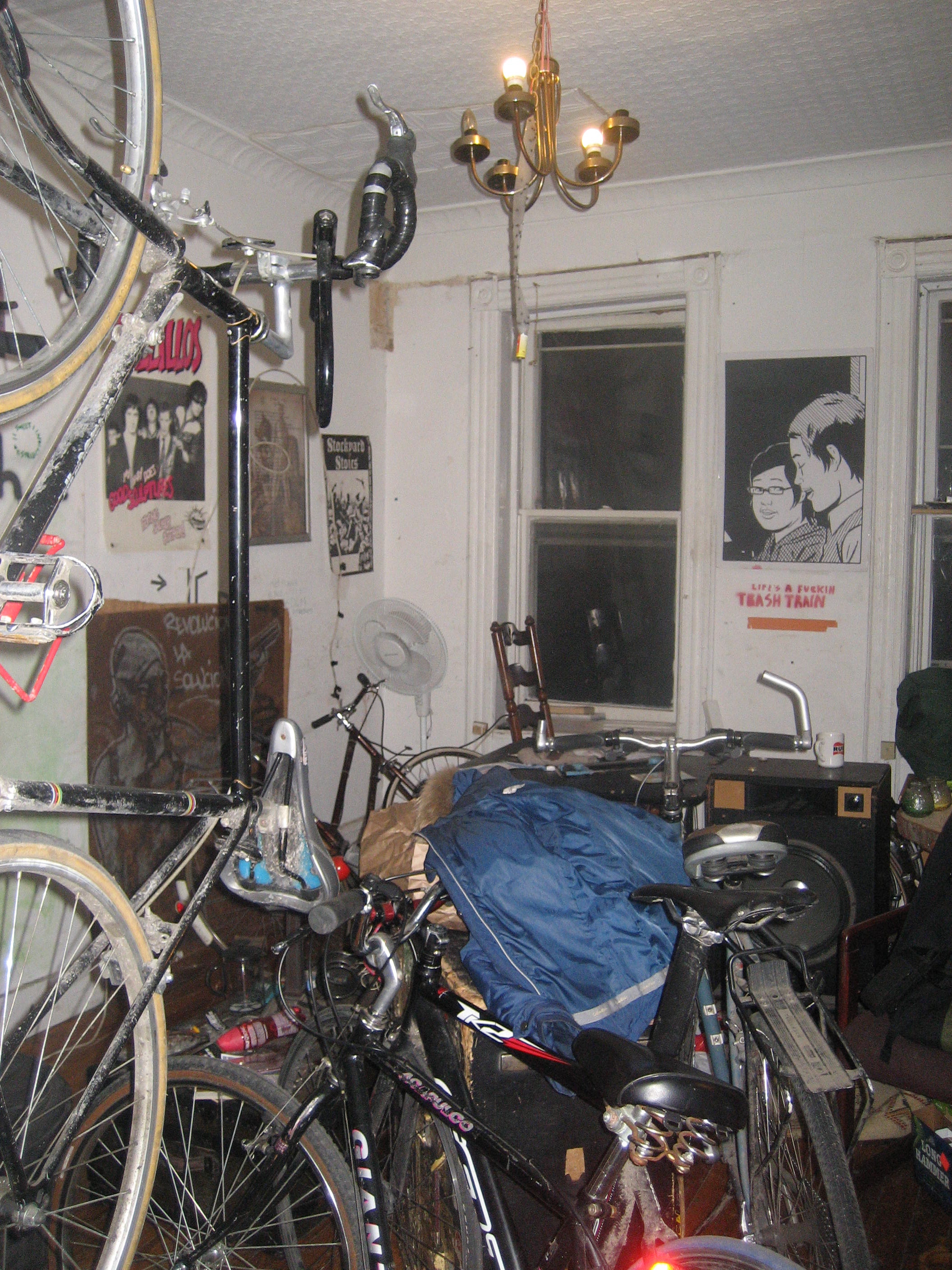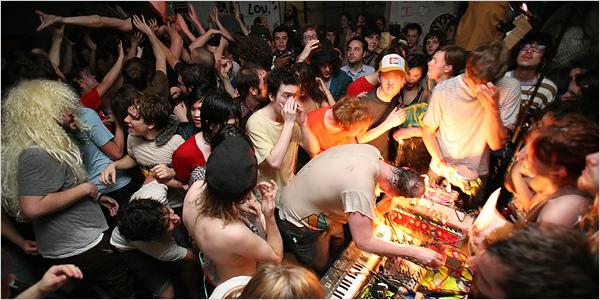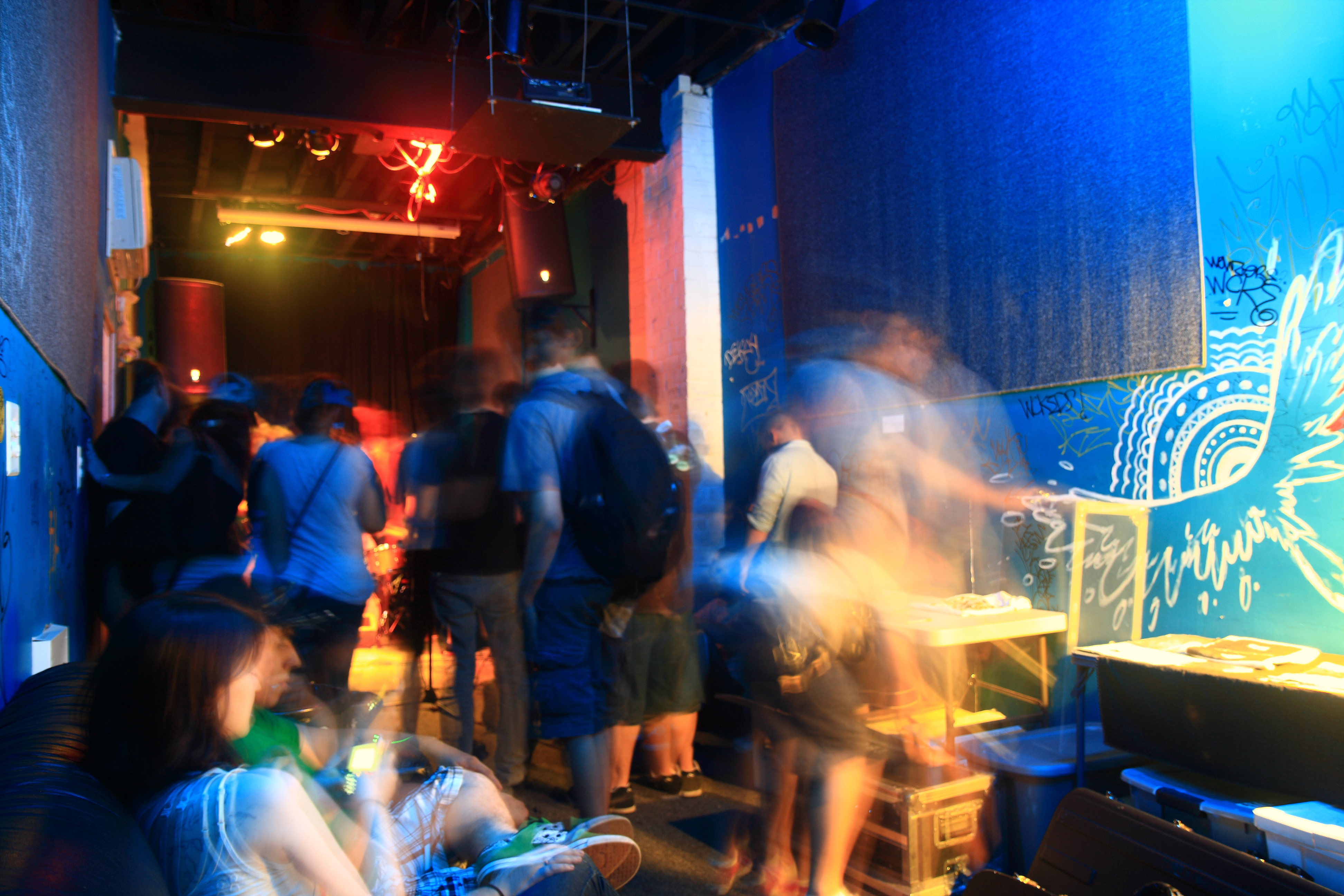greenroom brooklyn
neighborhood: bushwick | space type: apartment & party space | active since: 2010 | links: website, facebook, twitter
Self-described as “Brooklyn’s underground launchpad for performing artists,” Greenroom Brooklyn is run by violinist and dancer Johnny Arco, with help from Ryan Alexander and several friends. They’ve thrown nine parties in the last year, primarily on their roof, and they bring in lots of musicians and DJs to keep everyone dancing and to foster impromptu and spontaneous performances throughout the night.
They invited me out to a party in September, and I got there as they were putting the finishing touches on the rooftop decorations. It looked amazing, full of lights and art, with instrument clusters in three corners. And then it started to rain. I watched the assorted crew go from skeptical to worried, and then, once the decision was made to move the party downstairs into the loft proper, I was privy to (and a small part of) the most organized, polite, un-frantic overhaul I could have imagined. With fewer than a dozen people, in less than an hour, everything was brought inside down makeshift ladders and through half-functional windows, all the furniture in the loft was rearranged, lights and amps and mics were all wired and hung and assembled throughout the space. By the time they opened the doors to a slightly restless and sizable crowd, it looked like they’d planned on an indoor party all along.
Check out this video they made to introduce their space, and then read on for my Q&A with Johnny!
brooklyn spaces: How did this all get started?
Johnny: It evolved pretty organically. We had our first party last July; it wasn’t planned very well, but all these awesome people came. I’ve been an active musician my entire life, so I got together with some other musicians and started doing jam sessions, which turned into live music and DJ parties. We started getting better at seeing what was happening, how to get a quality crowd.
brooklyn spaces: So what, in your opinion, makes the party?
Johnny: The music’s super important, and the crowd. We make sure we have really terrific performers and DJs. And we invite people who are trying to do something, whatever it may be. That way, the ultimate goal of the party is to help people find other people who are doing things that could help them in their life, you know? People come to the party and become friends and start doing projects together.
brooklyn spaces: What are some of the bands who have played here?
Johnny: They haven’t been set bands. We invite lots of musicians and they come together and play. It’s always kind of impromptu. I just make sure to invite people I respect, and say, “Oh look, there’s a microphone! There’s a guitar! What if we shine a blue light on you…?” and see what happens.
brooklyn spaces: Why did you pick this neighborhood?
Johnny: Oh man, this neighborhood totally picked me. When I first came to see the space, I had already put down a deposit on a place in the East Village. But I came here anyway, just to check it out. It was massive, with nothing built out, completely open, two walls of windows. I got here at sunset, took one look around, and pulled out my violin. I was like, “I need to play in here right now.” And it was like the most chambery, echoey, cathedral-like tone I’d ever heard in my life—well no, that’s not true, but in my home for sure. Anyway, I had to live here. And it’s been incredible. I don’t have an expensive life, I get to play music all day long, and I’m surrounded by other artists and entrepreneurs who are doing what they love and want to do. Bushwick rocks.
brooklyn spaces: As an artist, are you inspired by being in Brooklyn?
Johnny: I’ve been an artist and a performer for my entire life, but I definitely feel lucky to be in Brooklyn and have this type of space. It makes it seem like every time I pick up my instrument and play, I’m doing something special. Even if it’s just some friends hanging out, I feel like I’m performing in New York City, like I’m living and making it in the hardest place for a performer to make it. It’s not “I live in Brooklyn, now I’m inspired to be an artist.” It’s “I live in Brooklyn, and I am an artist. This is what people fucking dream of.” I think that’s what everybody here feels, whether they’re doing sound or lights or just hanging up a piece of art in an apartment. It feels so real, because it is real, the Greenroom is real, we’re really doing this. And there’s also a real responsibility, because we’re living in Brooklyn, being artists in Brooklyn, being inspired by Brooklyn. There’s an obligation to make something of quality, something we’re proud to have in Brooklyn.
brooklyn spaces: What are your goals for the future of the space?
Johnny: We want to set up a system so that the Greenroom isn’t just the loft space itself, but something portable that we can take with us. We want to do a loft tour throughout the country, to get in touch with other people and say, “Hey, we have a cool loft space where we can do this stuff, you have a cool loft space where you can do this stuff, can we bring our crew and our equipment over and have a good time?” We’ve already got people onboard for Philly, D.C., and Boston. We’re trying to do the whole thing next March, from Montreal down to Austin. That’s the goal.
***
Like this? Read about more apartment party spaces: Bushwick Project for the Arts, Hive NYC, Egg & Dart Club, Dead Herring, Jerkhaus, Newsonic, The Schoolhouse
